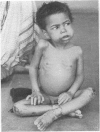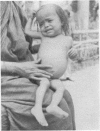Abstract
A protein malnutrition survey was carried out in ten areas of four States of South India among children under 5 years of age in families with a monthly income of less than Rs 100, estimated to constitute 85% of the population. The agricultural situation and socio-economic conditions are described. The diets investigated consisted largely of cereals, with small quantities of pulses and green vegetables; milk, meat and eggs were little eaten. The survey covered investigation of infant care, feeding and weaning practices, clinical examinations, anthropometric measurements, determinations of haemoglobin and serum protein, and analysis of hospital records.
Although infants were usually breast-fed for a long time, the quantity of breast milk was found to be low after 6 months, at which time supplementary foods were introduced, but these were usually inadequate. Extreme growth retardation was seen after weaning. Diarrhoea was complained of in some 20% of children. Such deficiency signs as dyschromotrichia, hepatomegaly, moon face, angular stomatitis and xerophthalmia were frequently seen. Frank cases of kwashiorkor and marasmus were observed in 1% and 1.7% respectively of children at home. These findings and others clearly show protein malnutrition to be a problem of very considerable magnitude in the poorer communities of South India. A comparison is made with the results of surveys conducted in Africa and in Central America.
Full text
PDF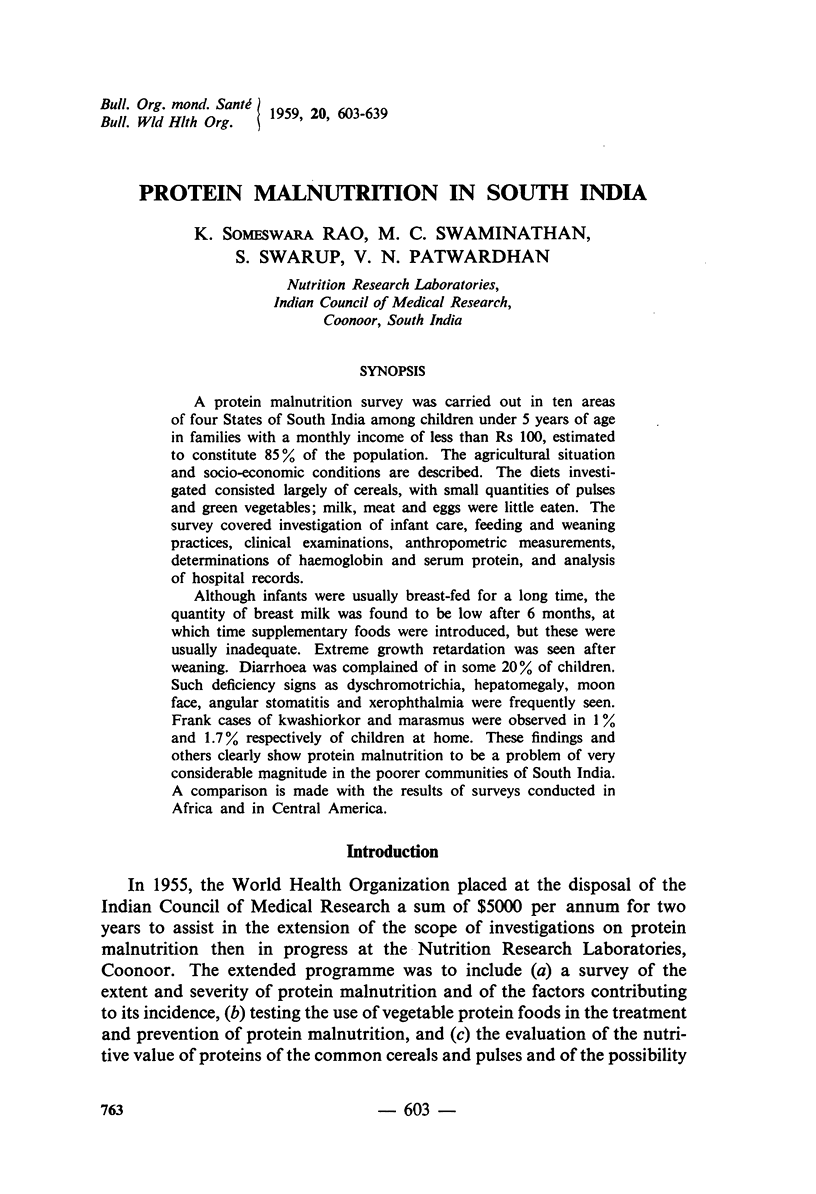
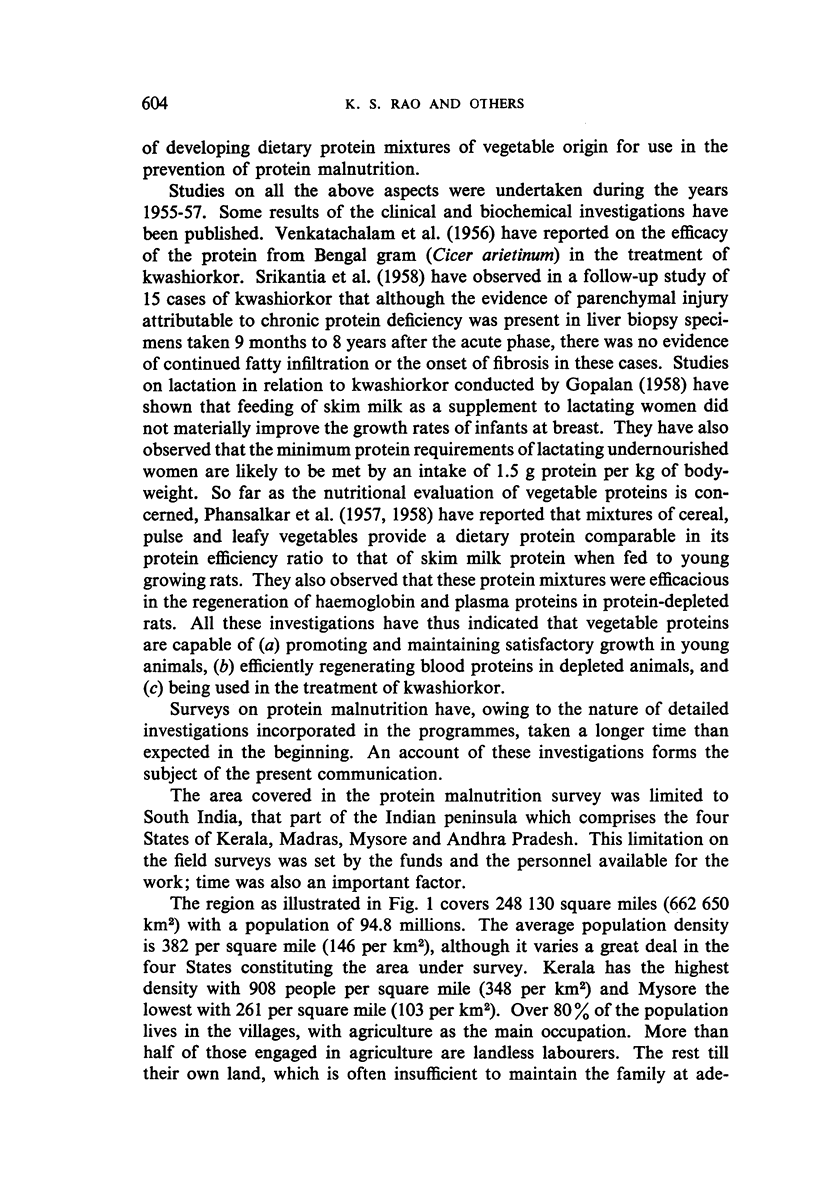
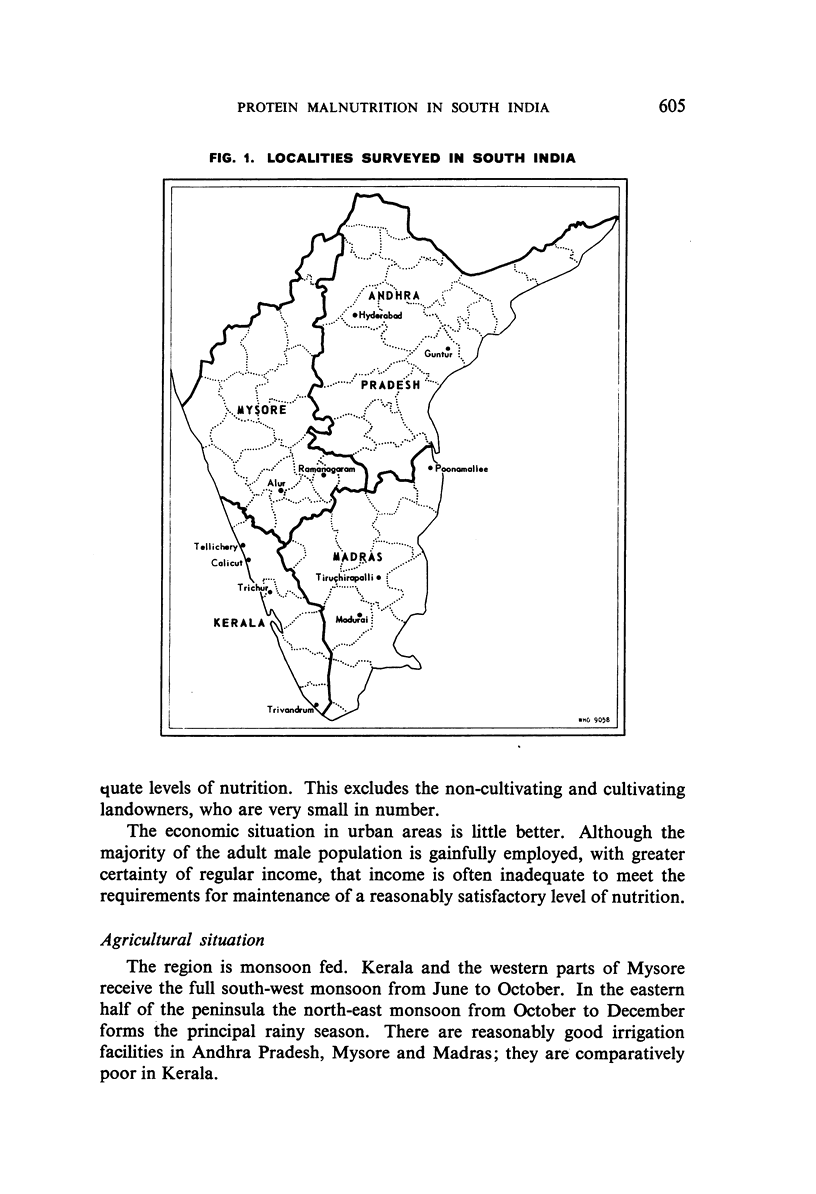
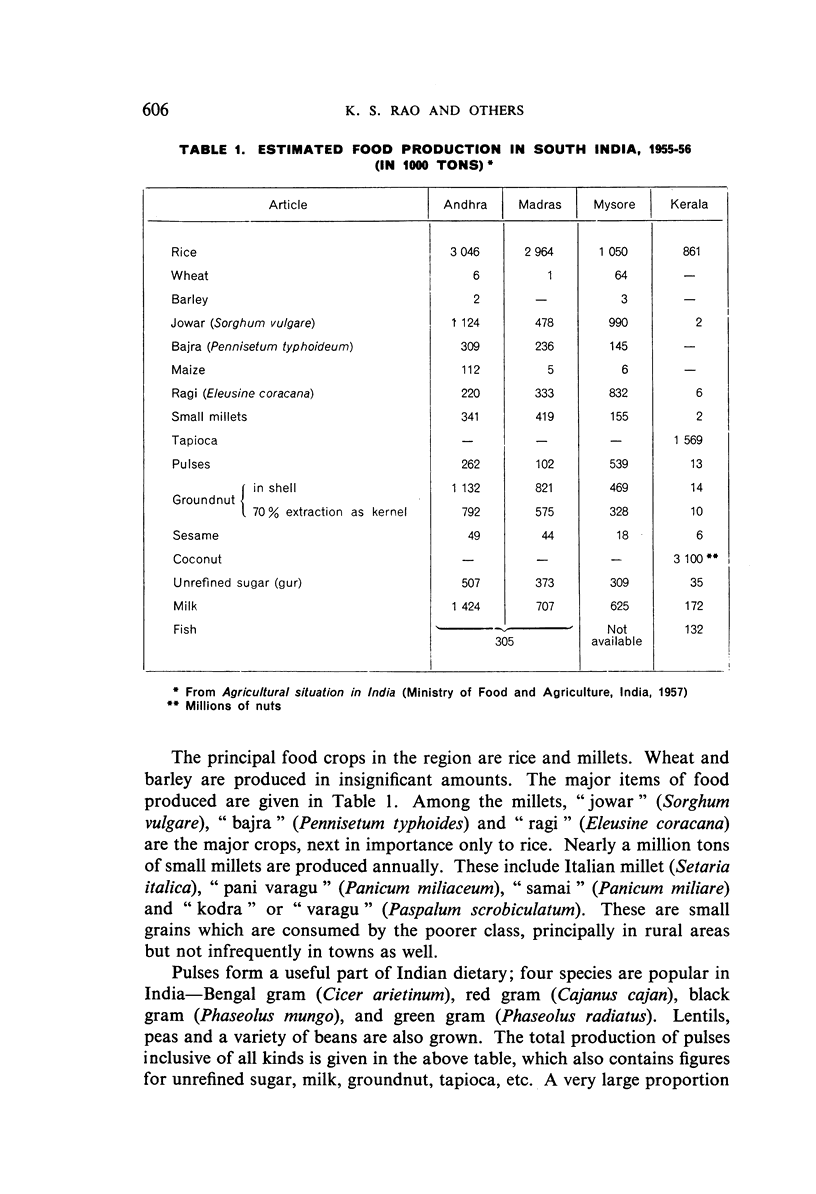
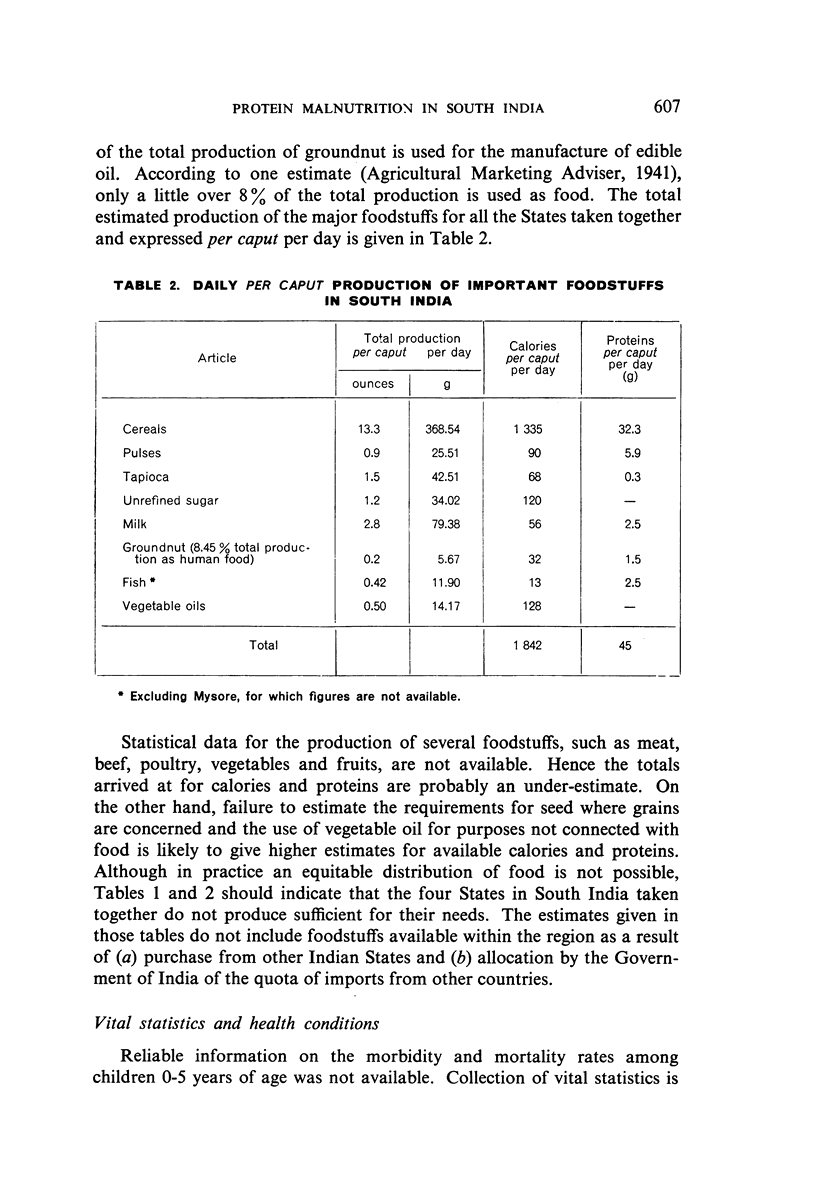
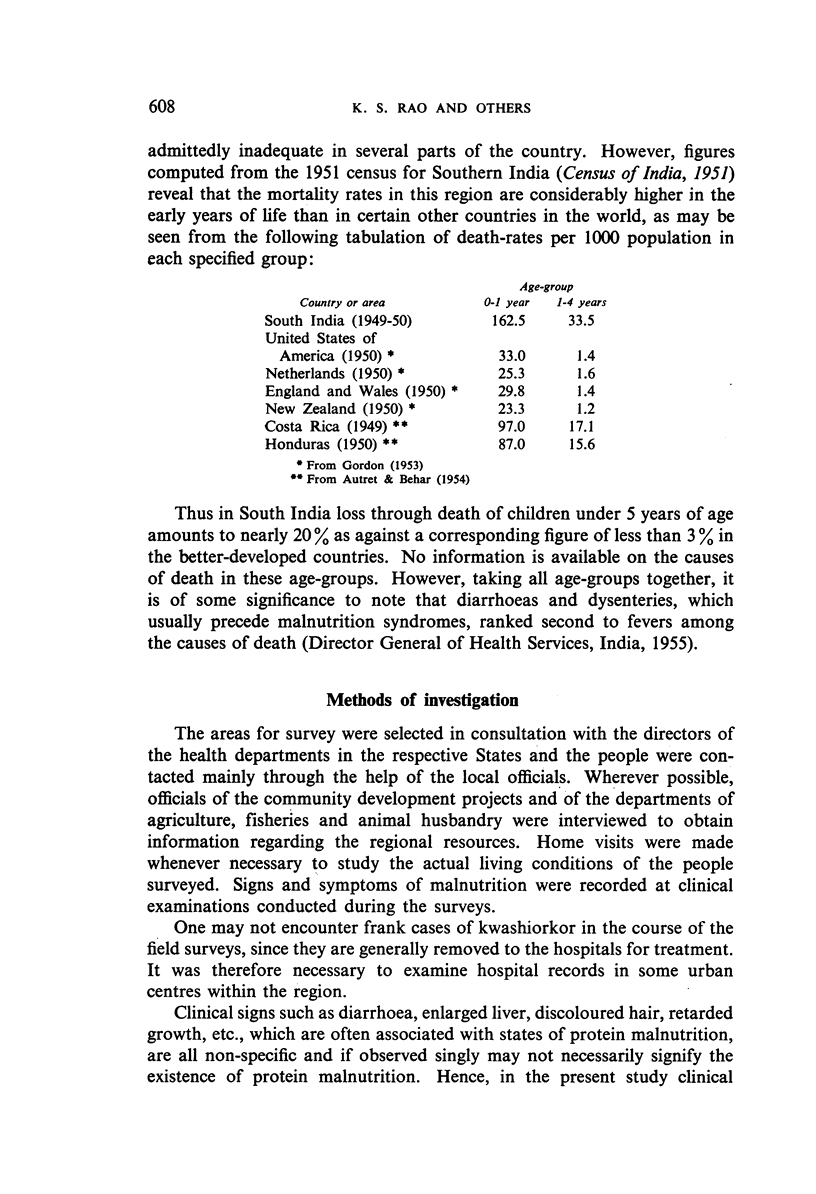
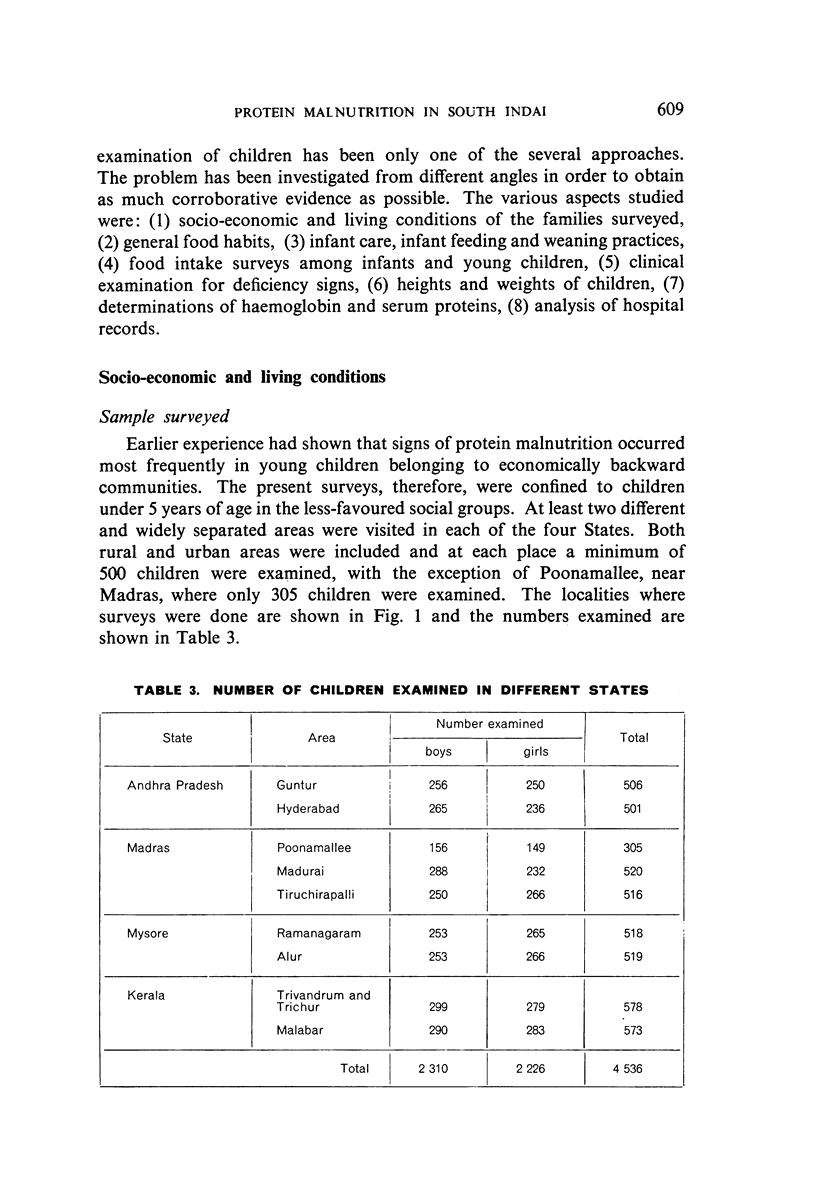
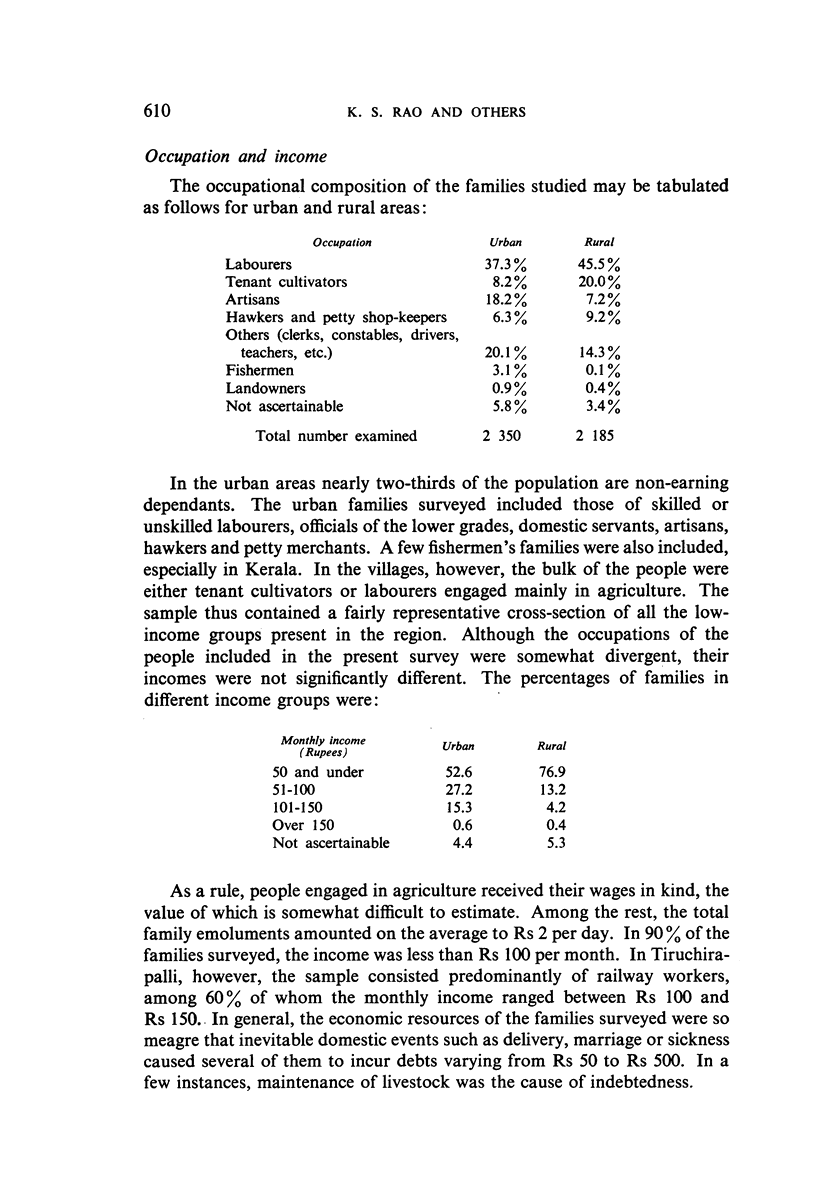
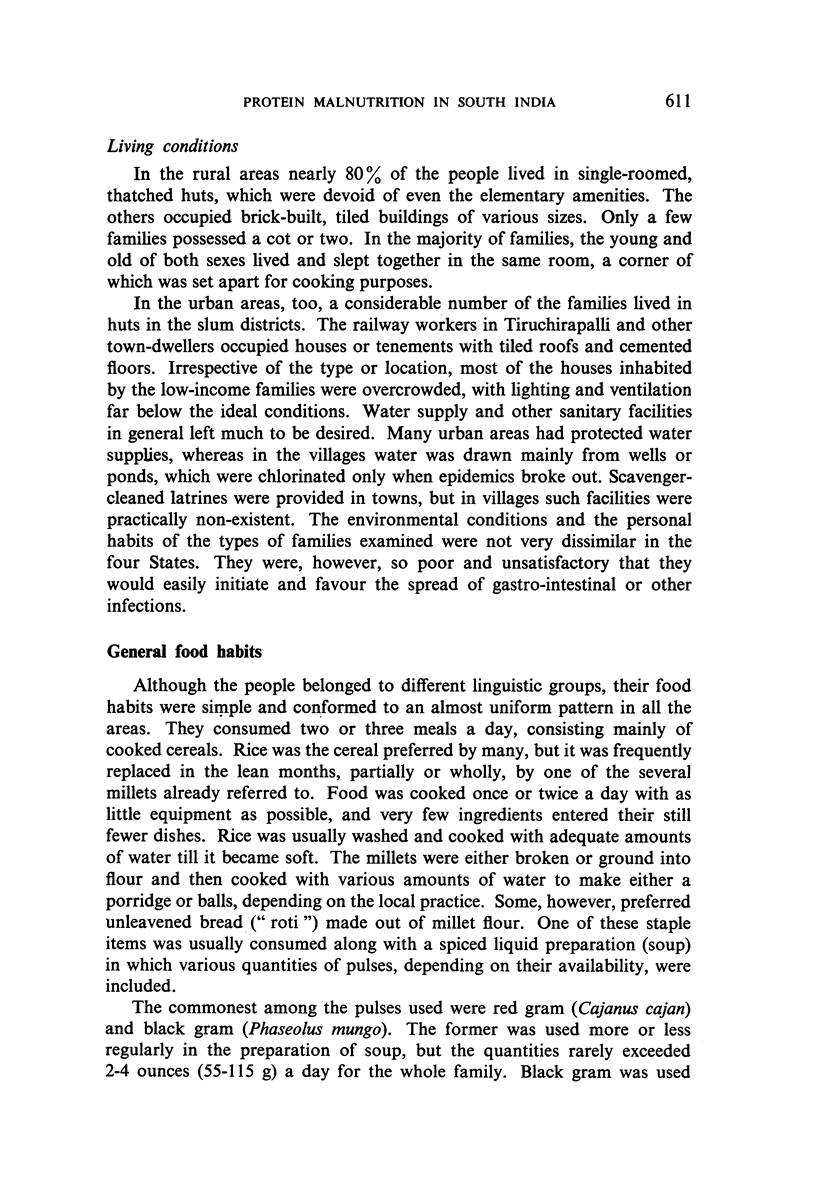
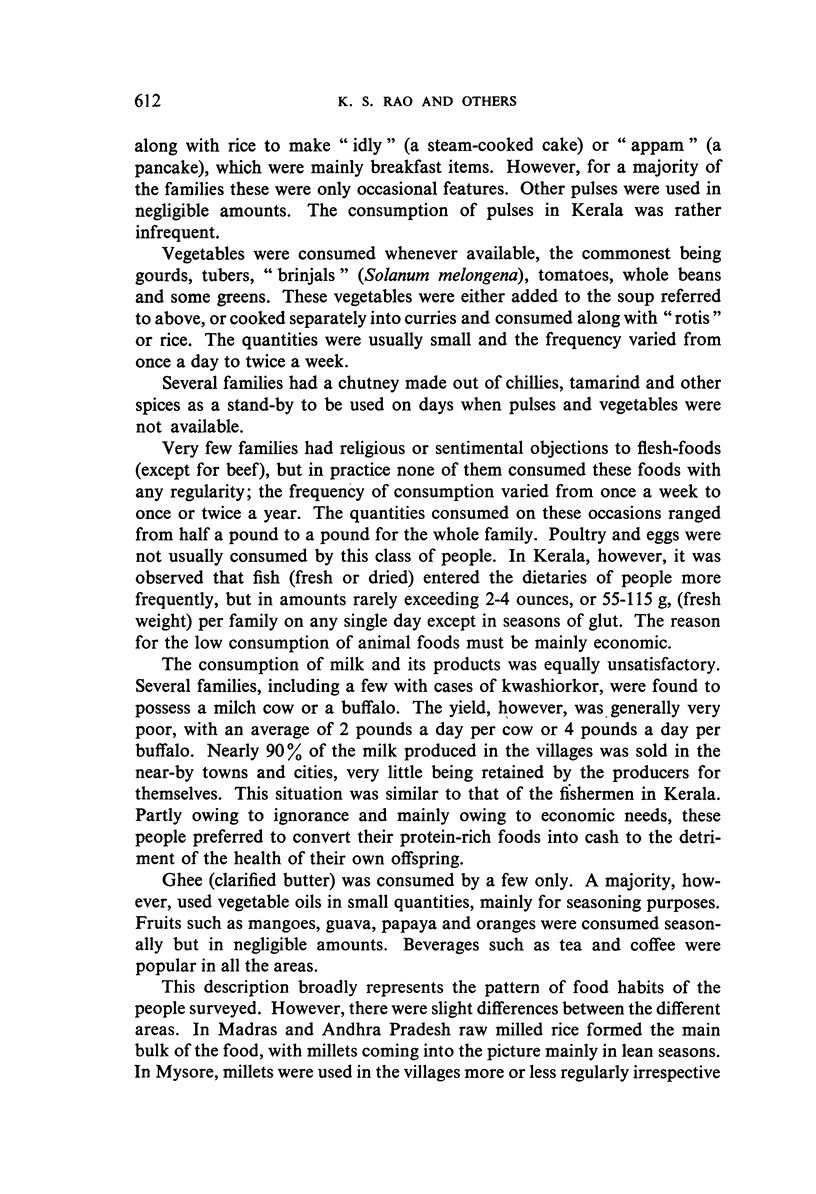
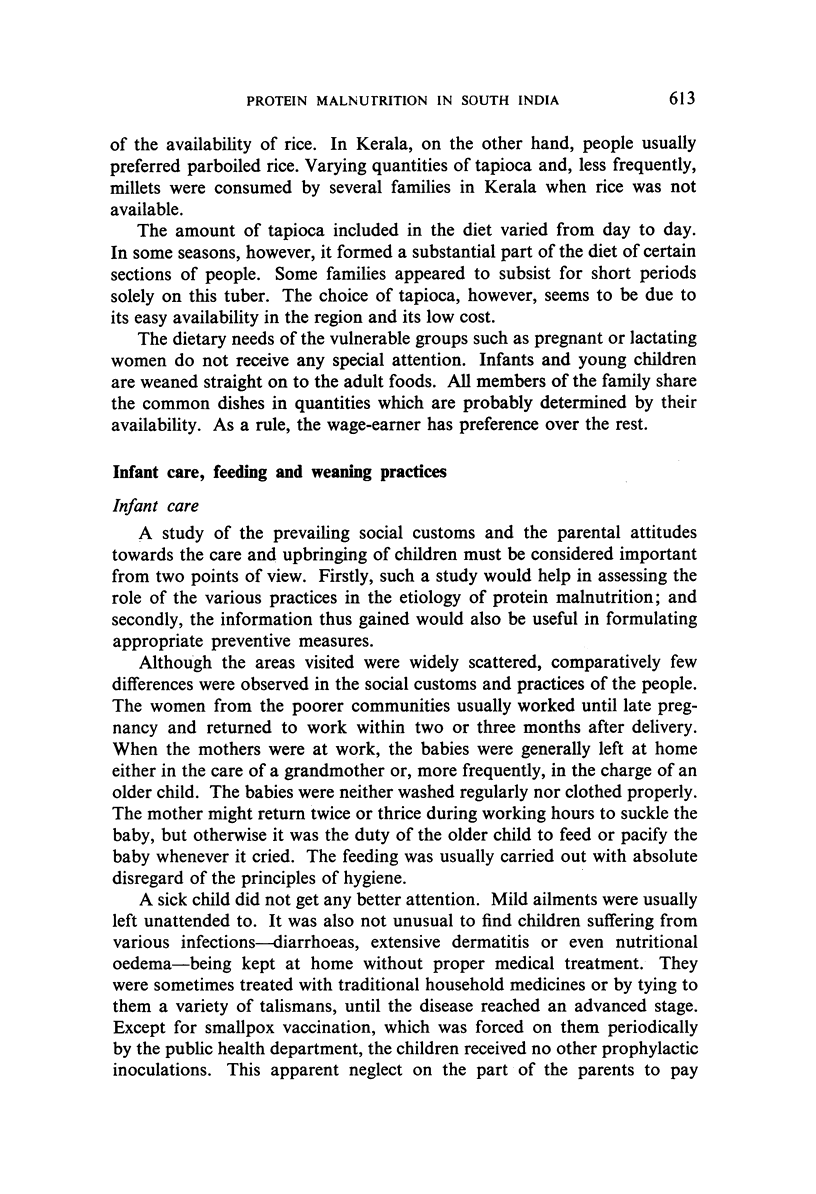

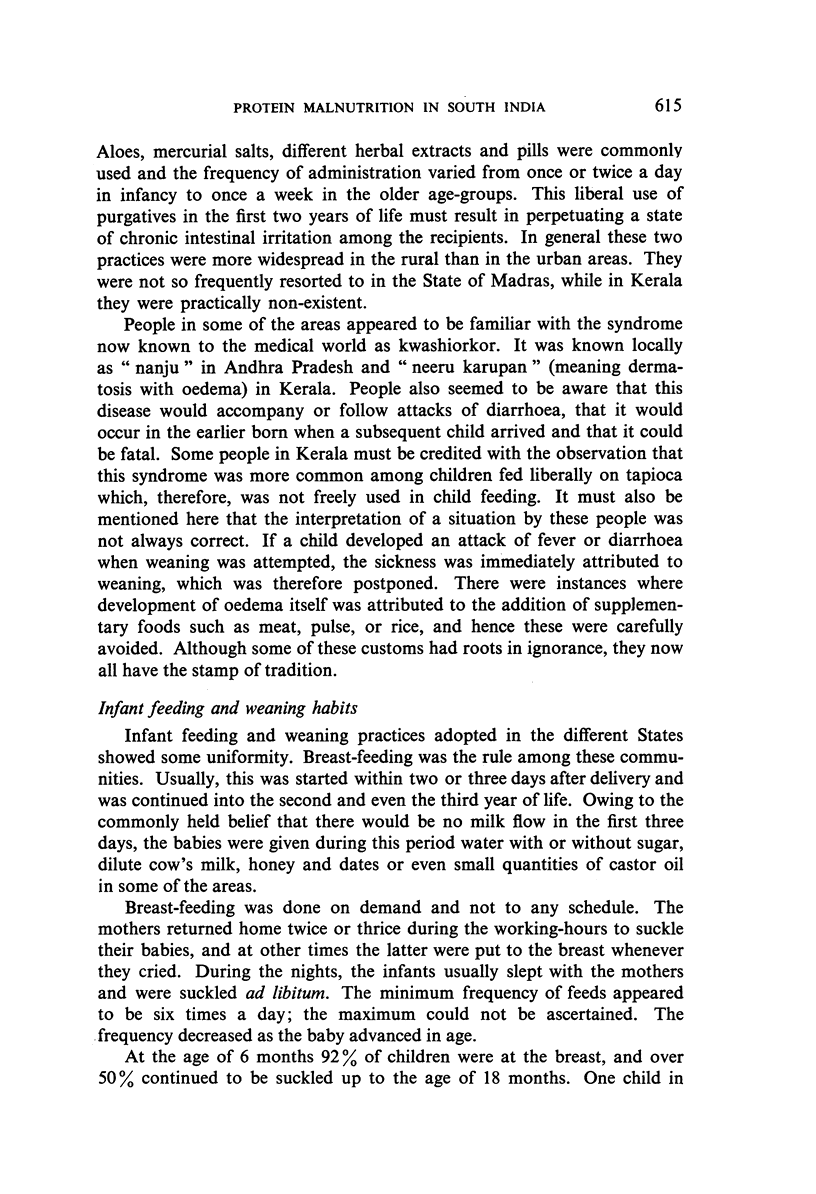
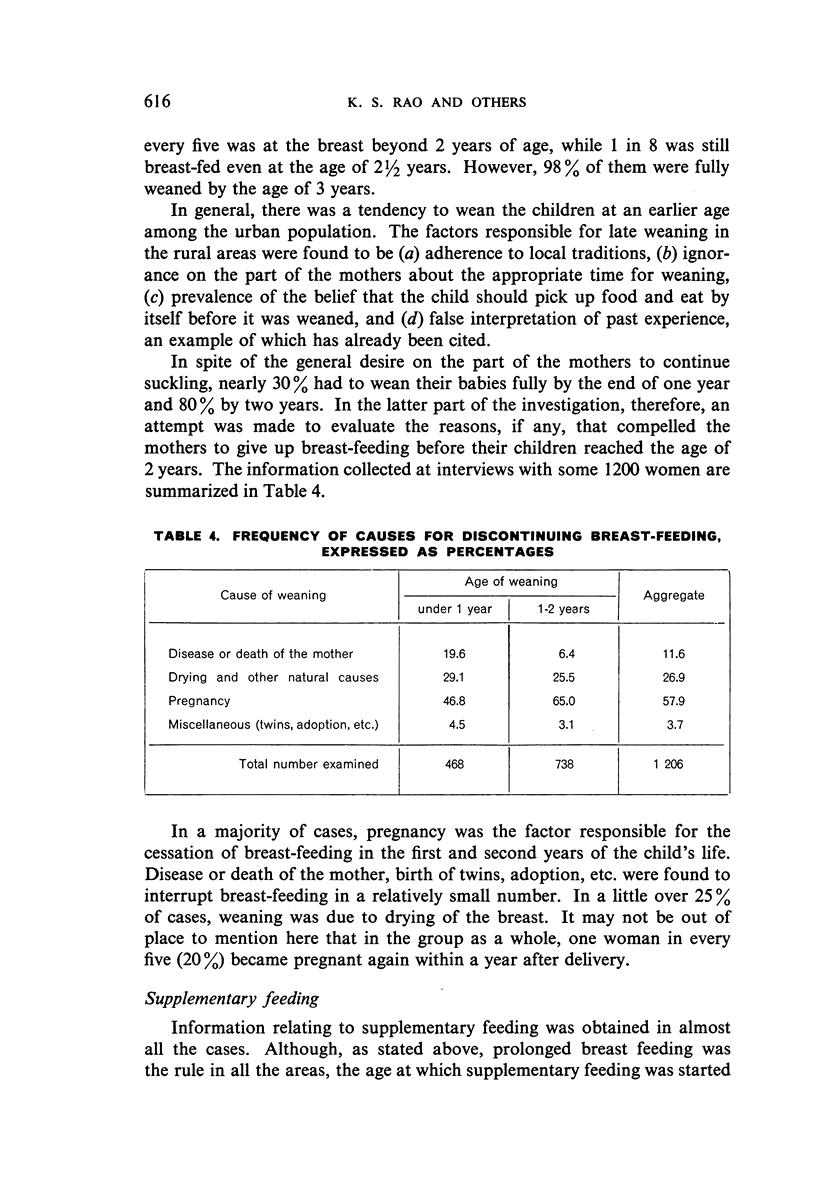
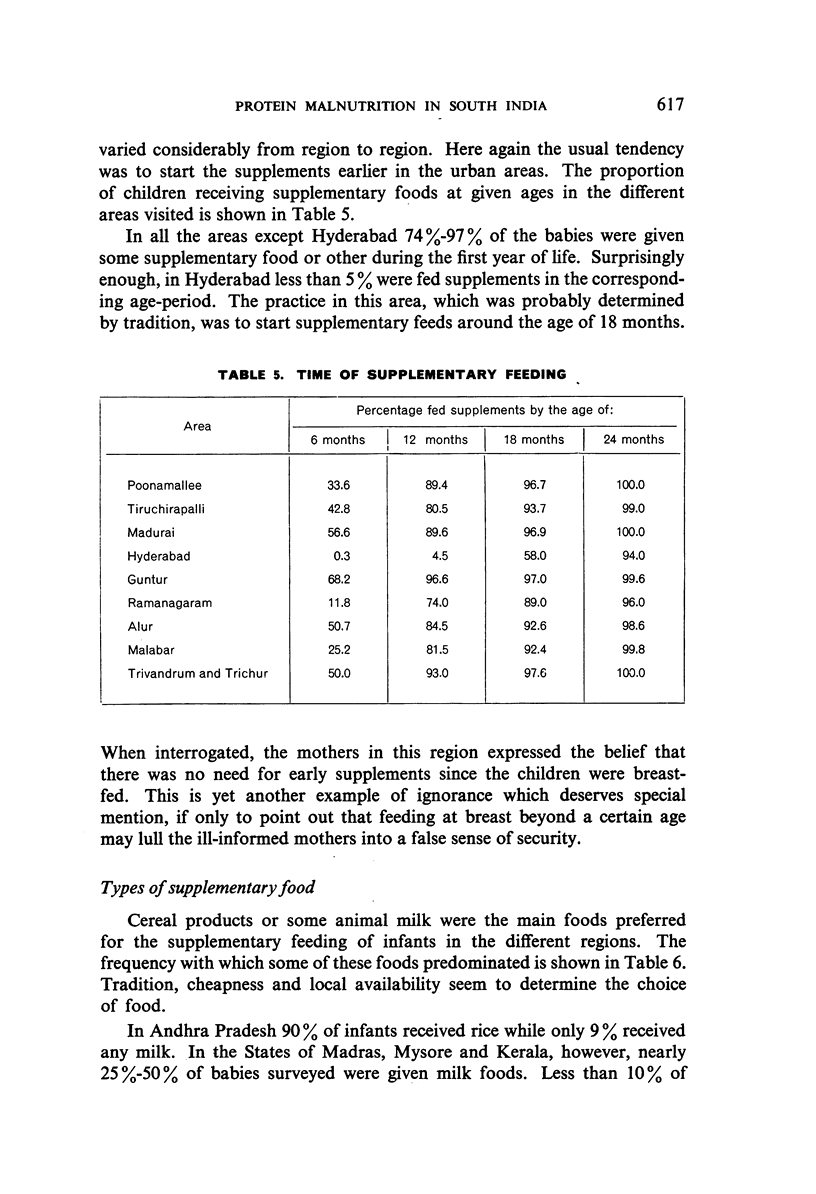
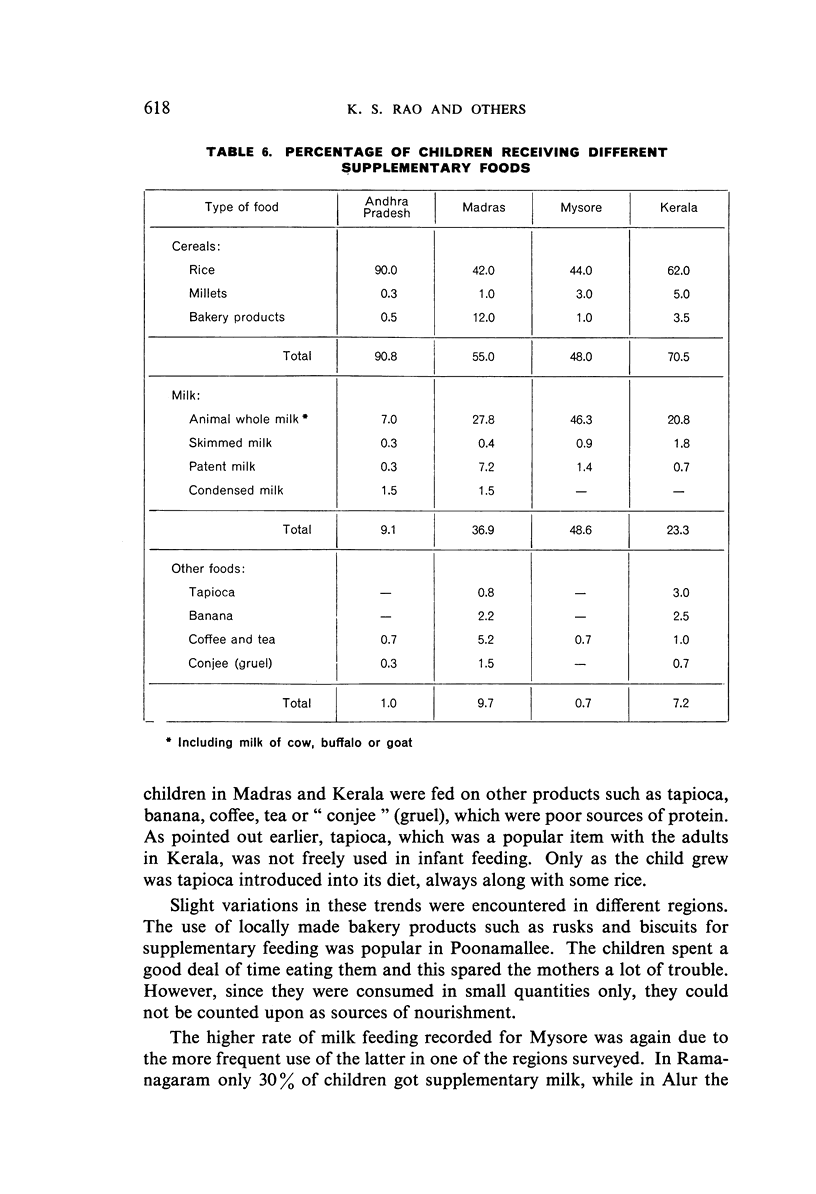
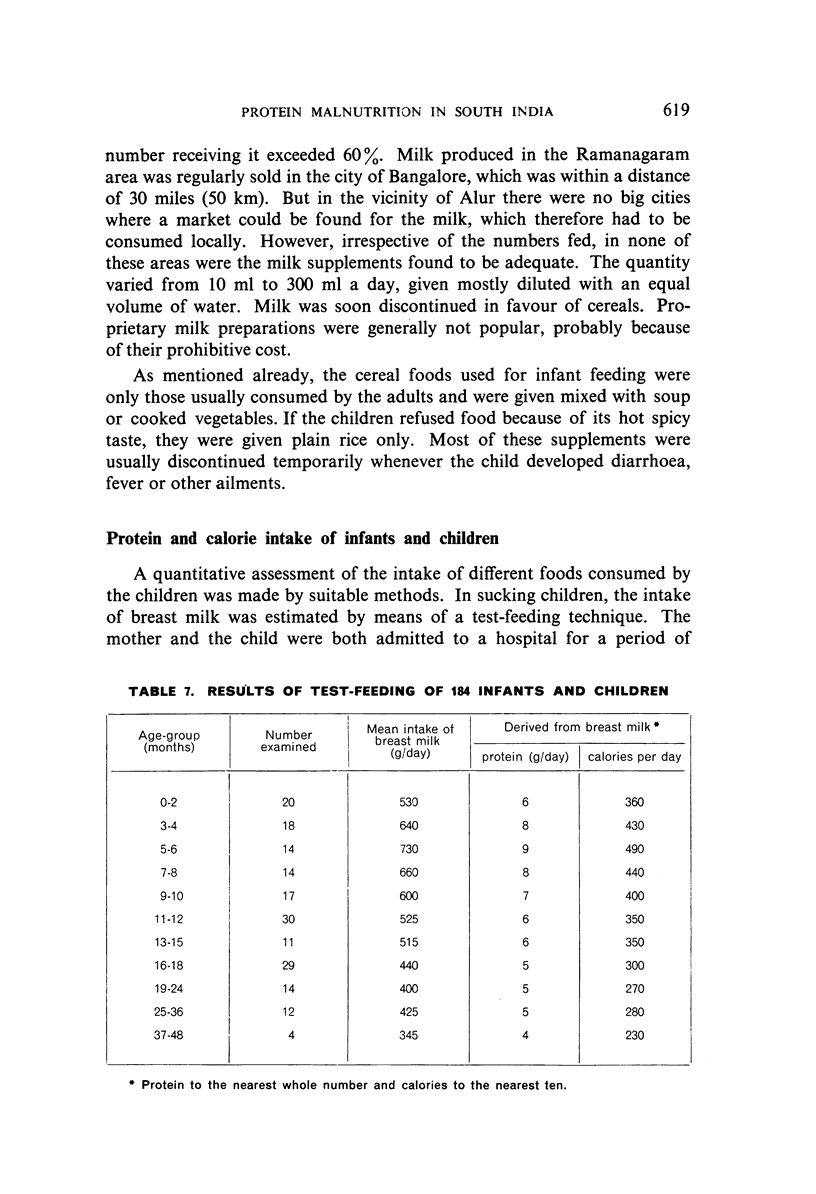
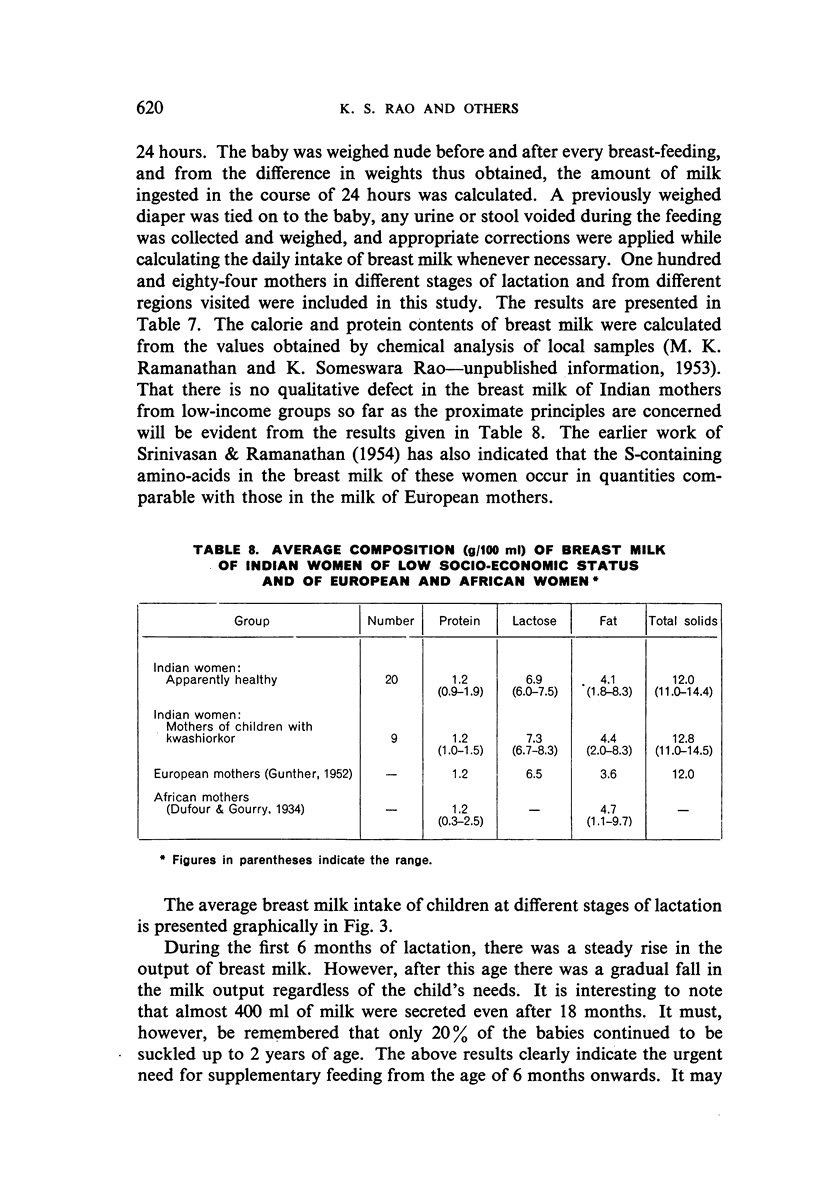
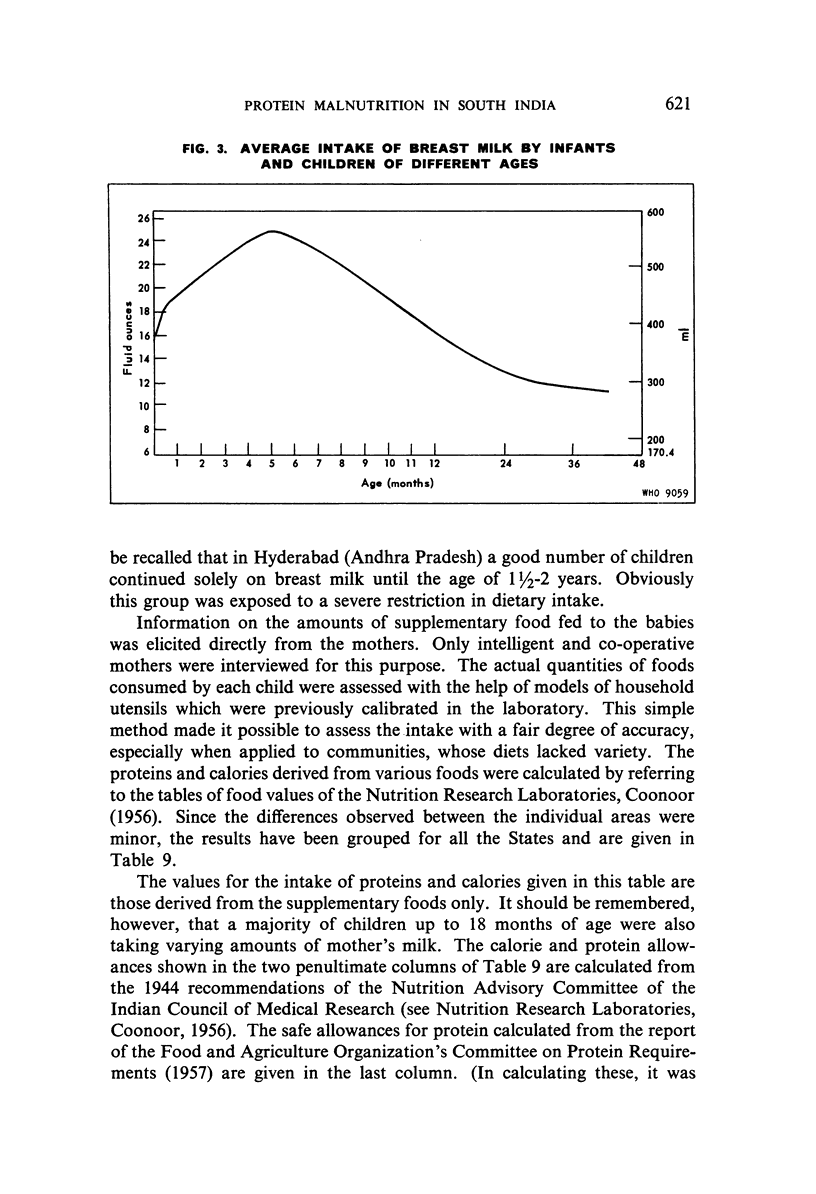
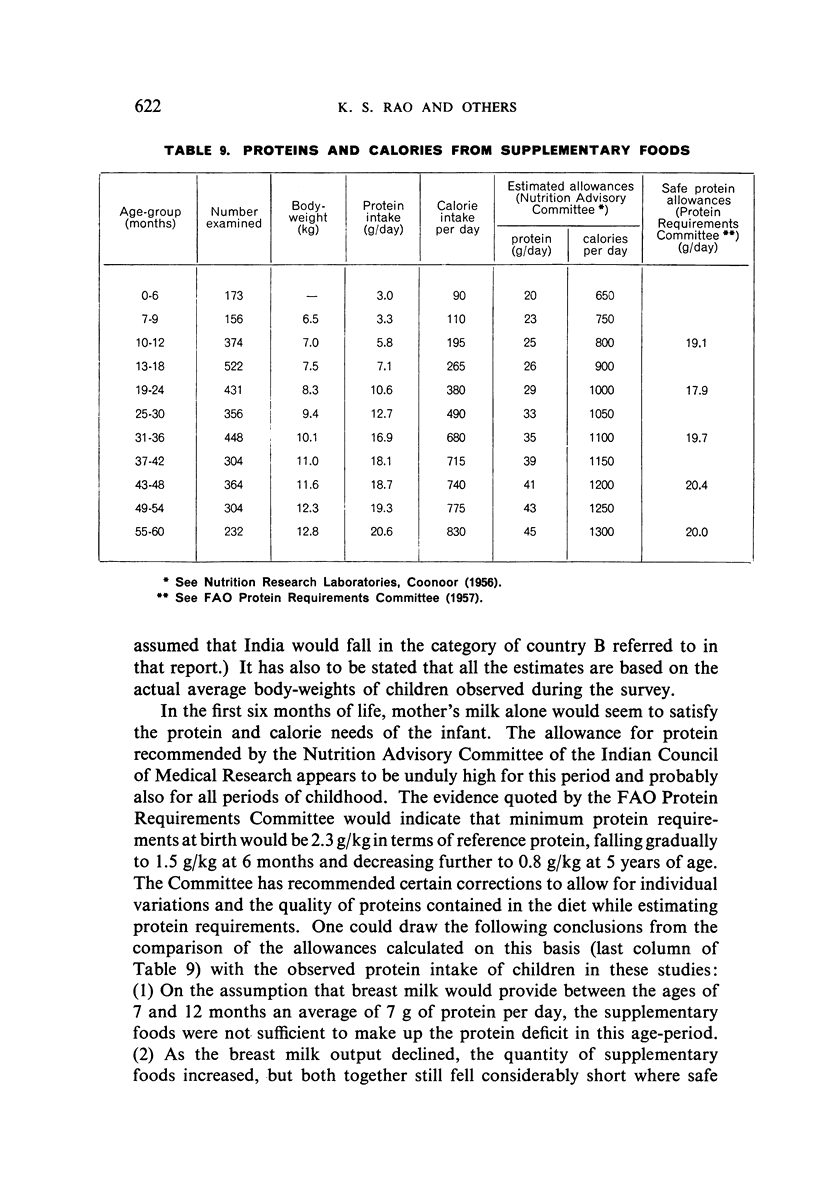
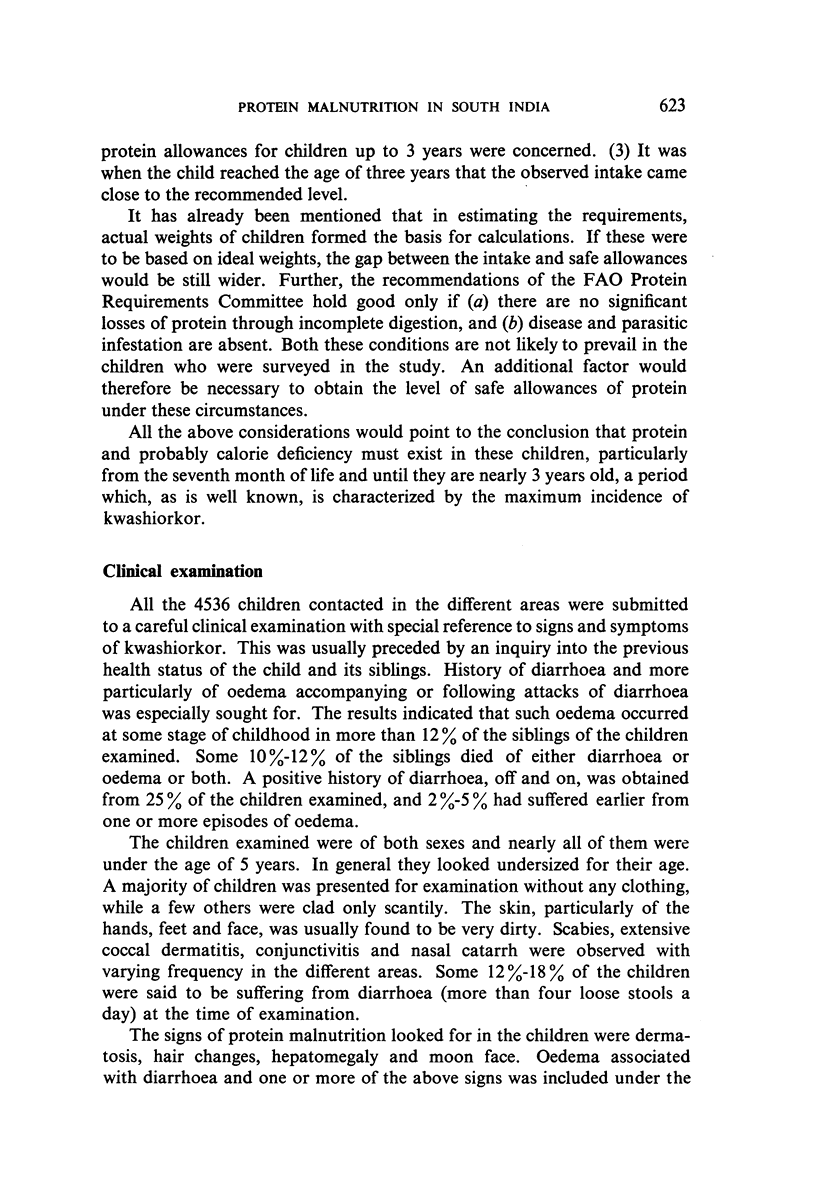
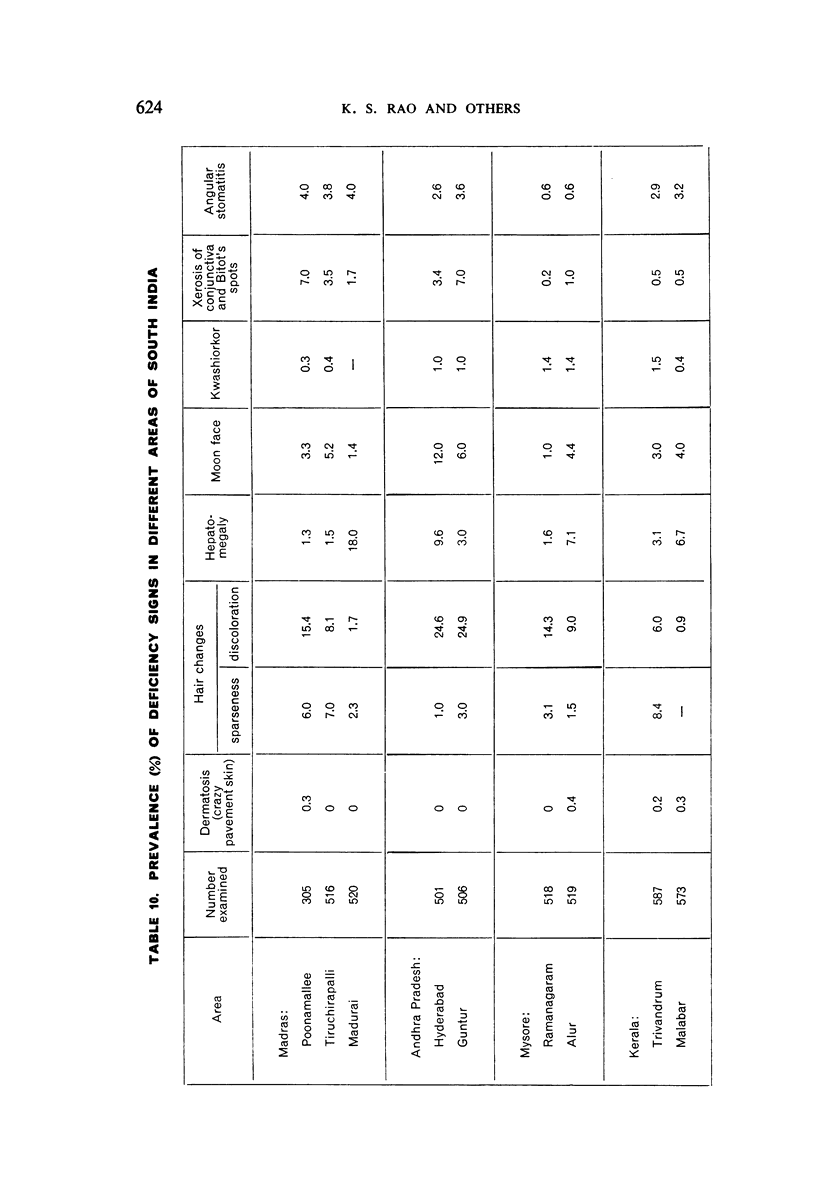
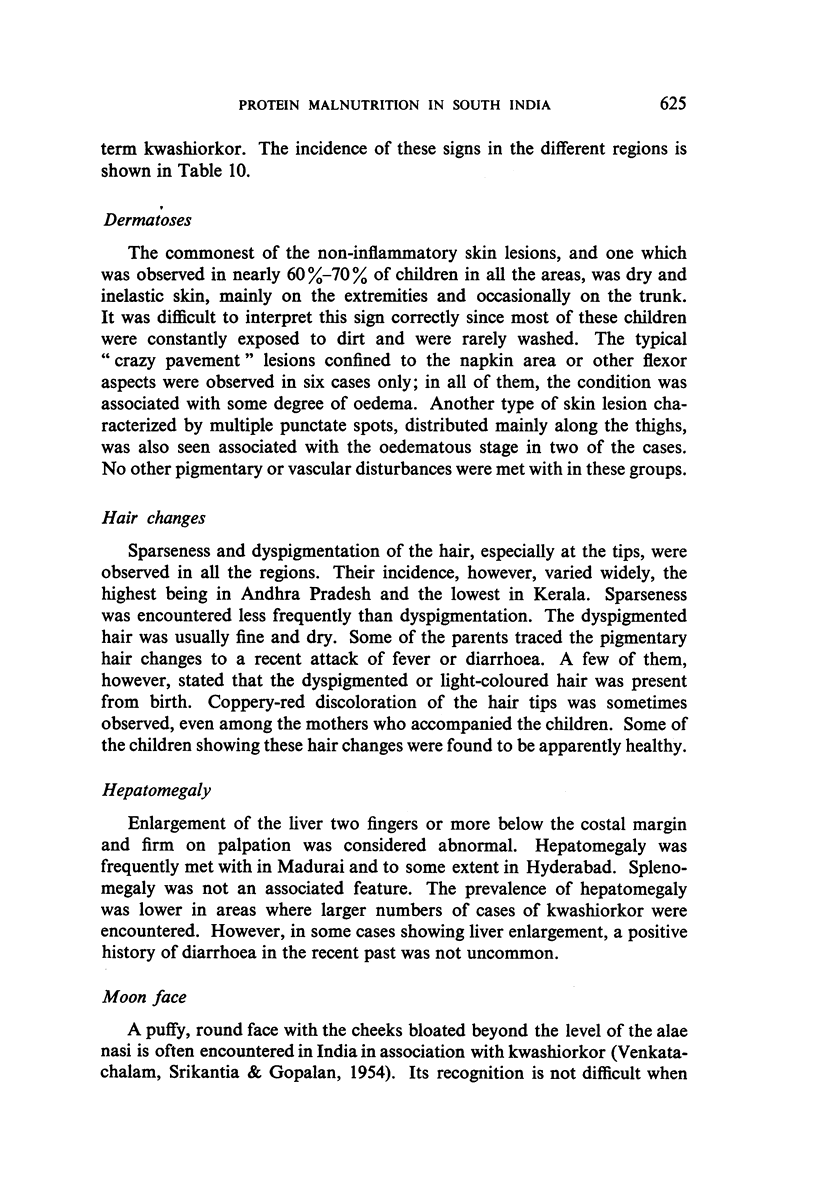
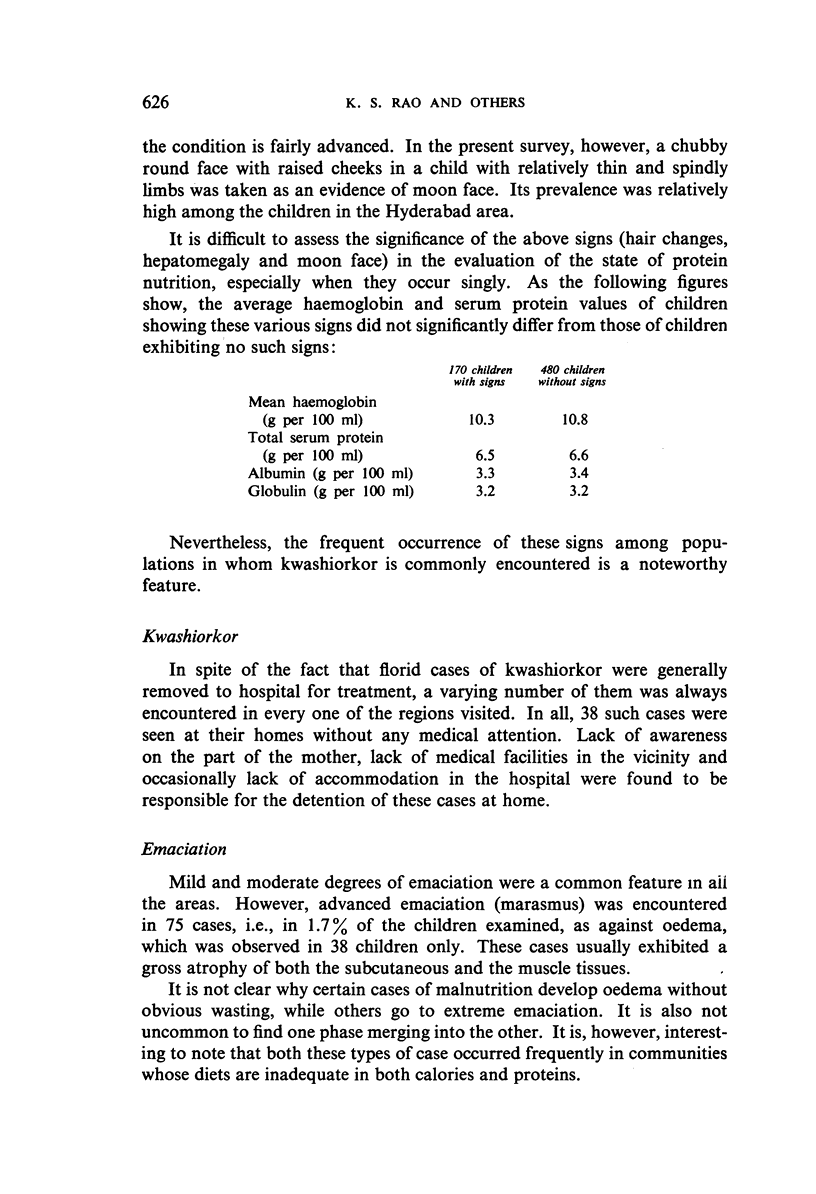
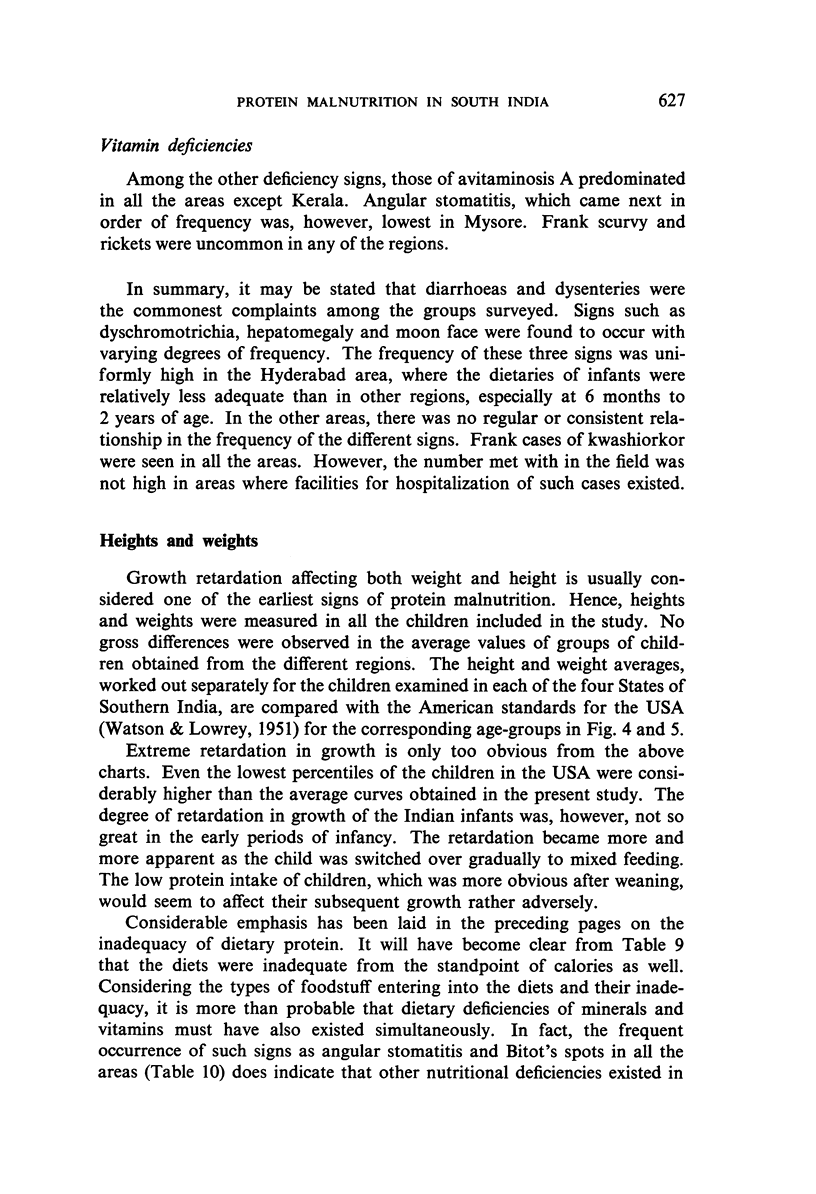
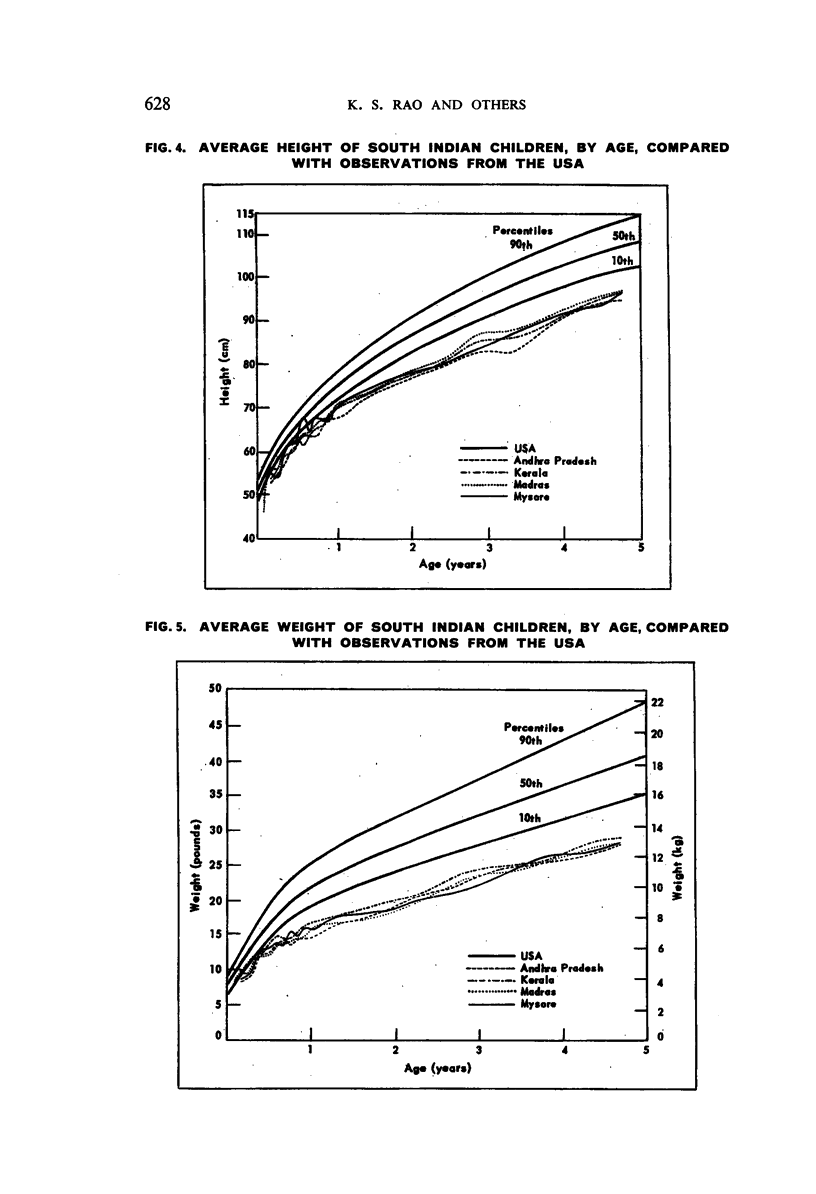
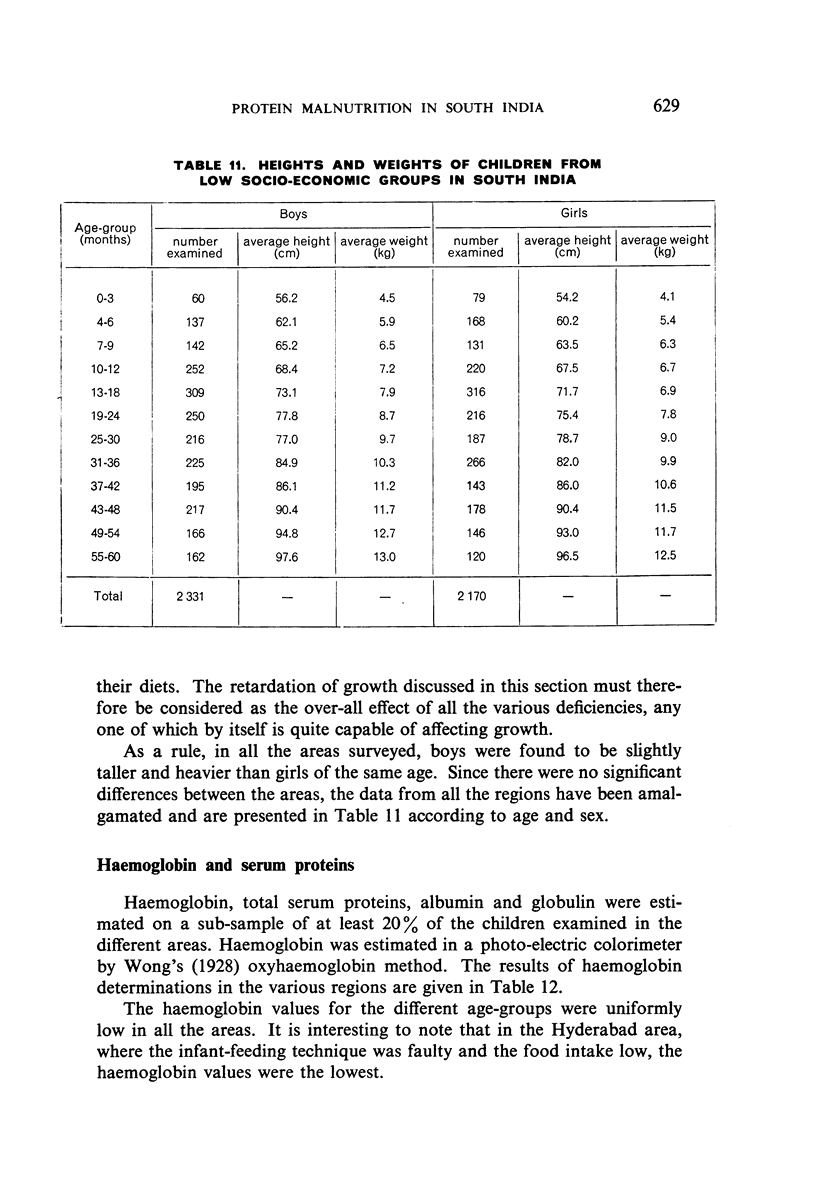
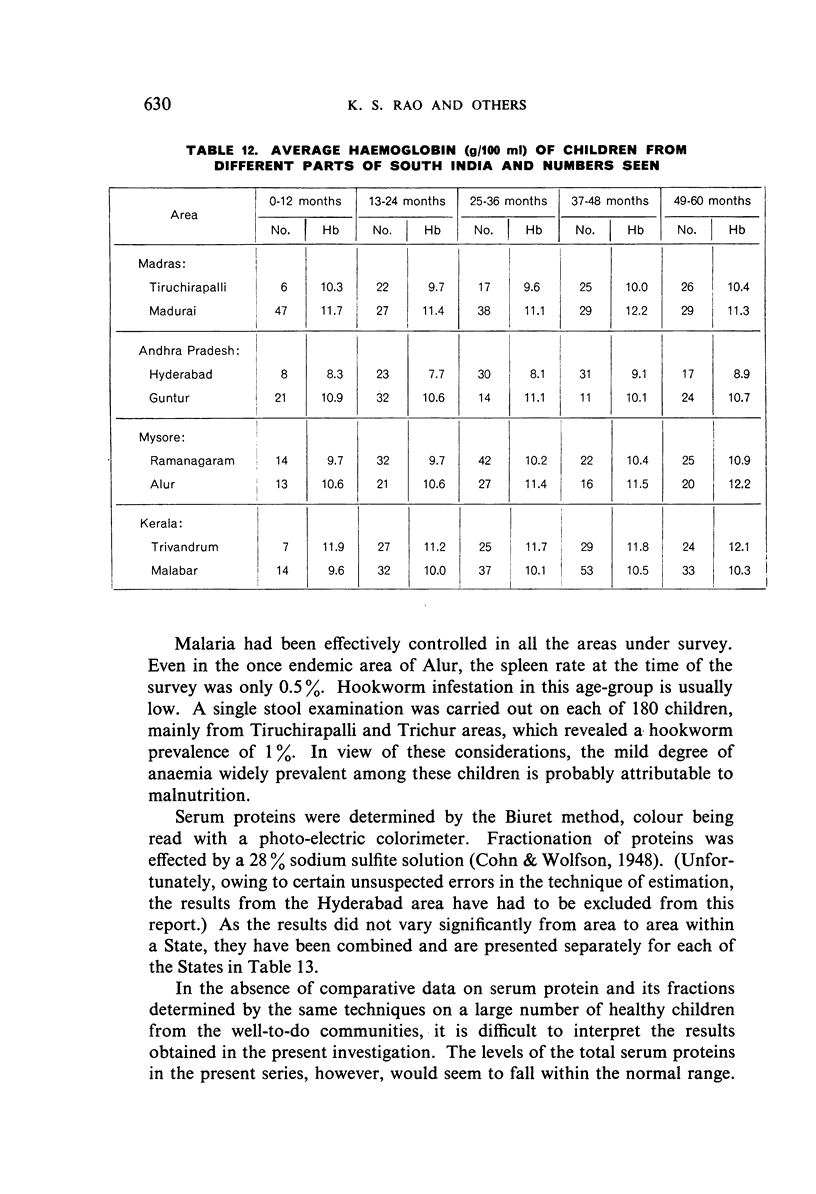
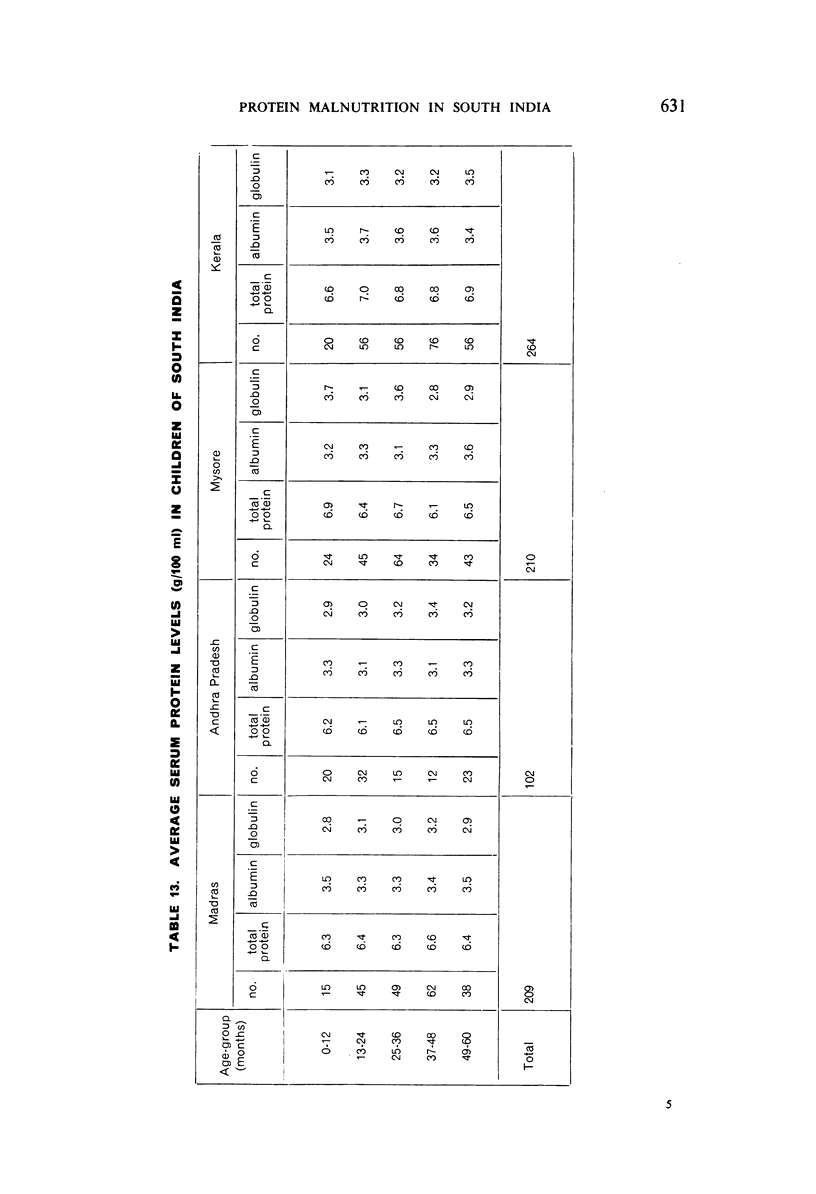
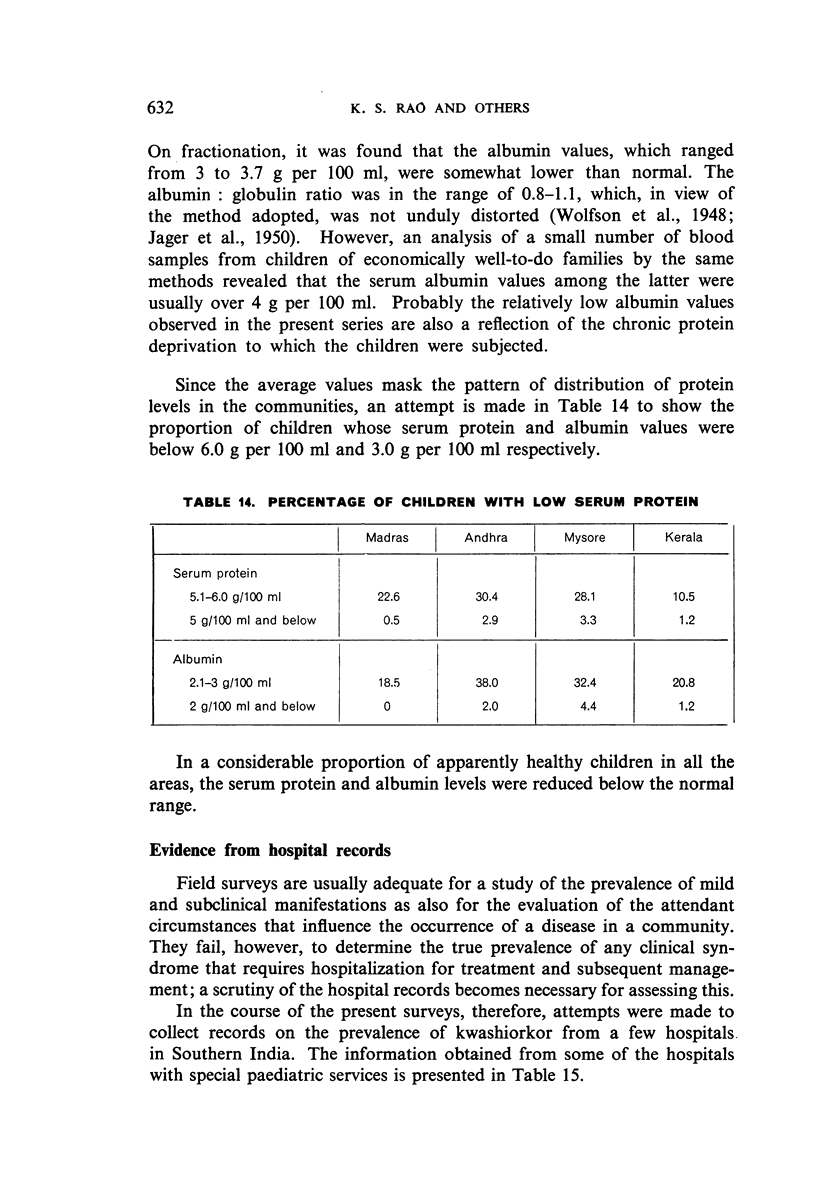
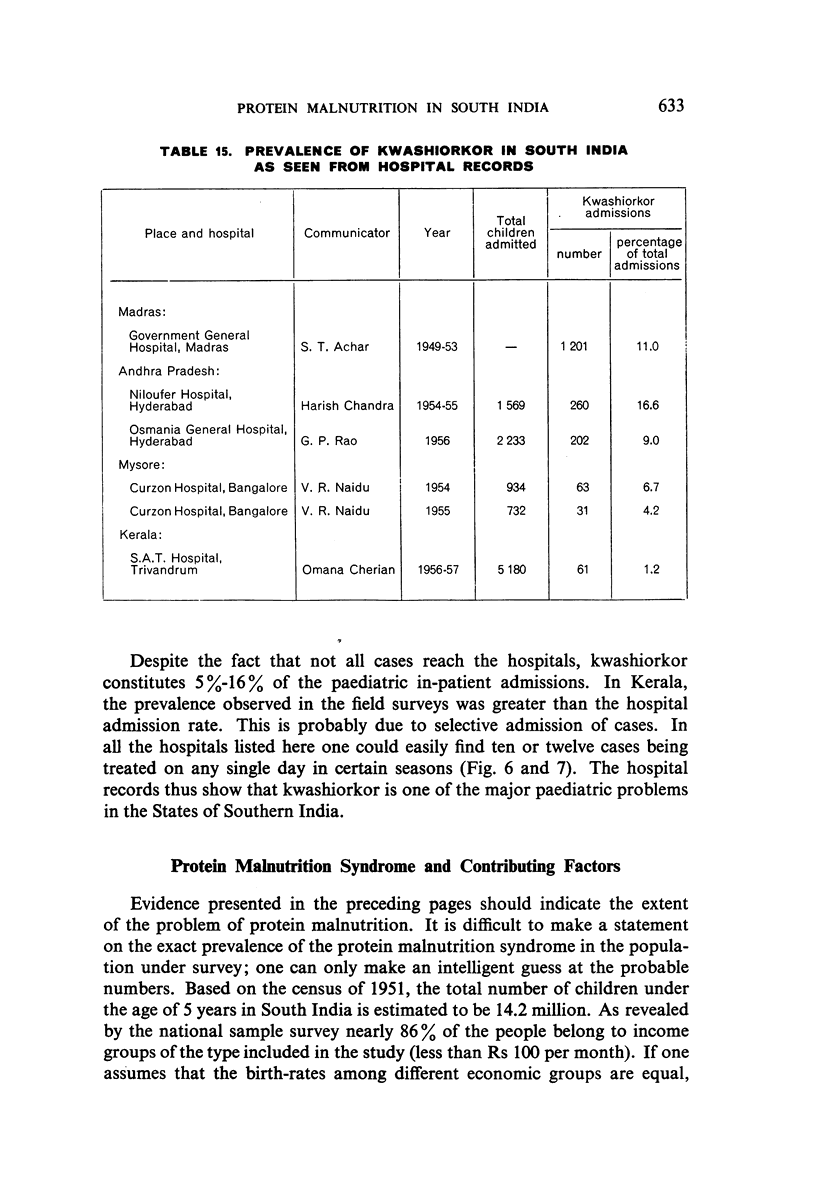

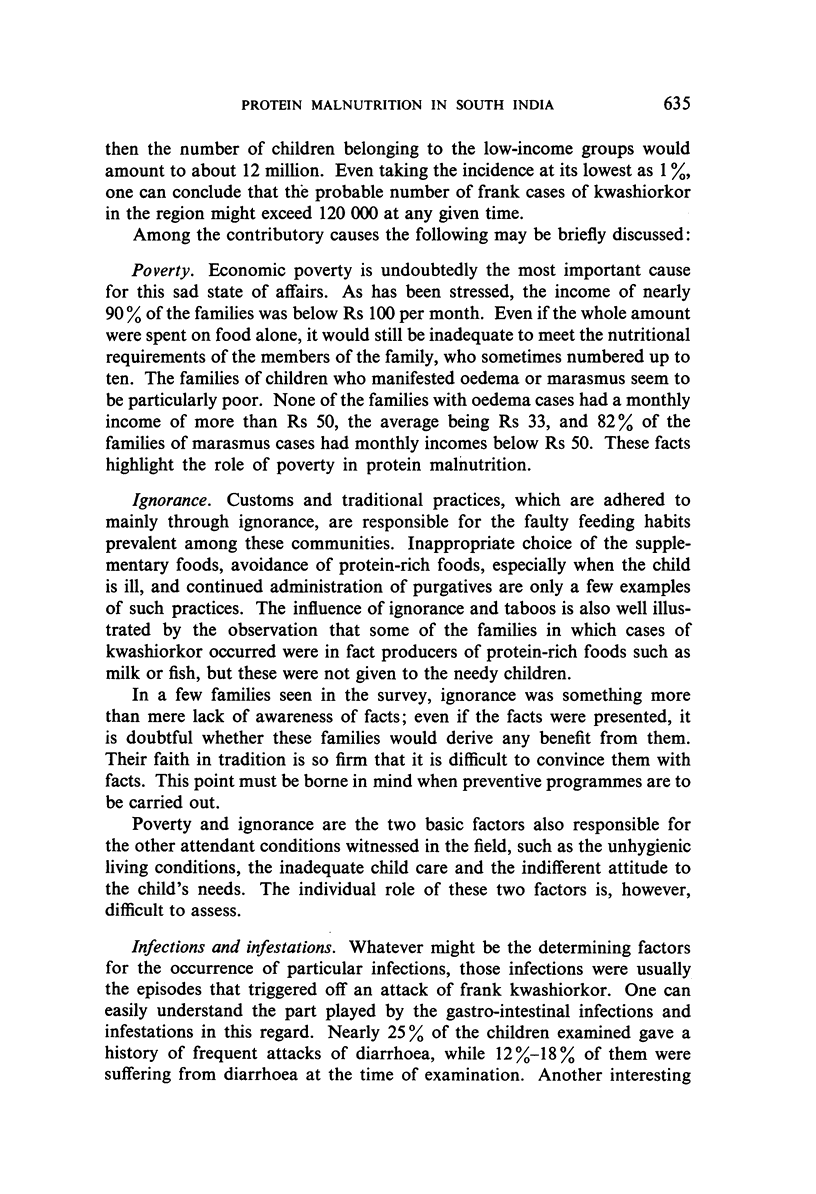
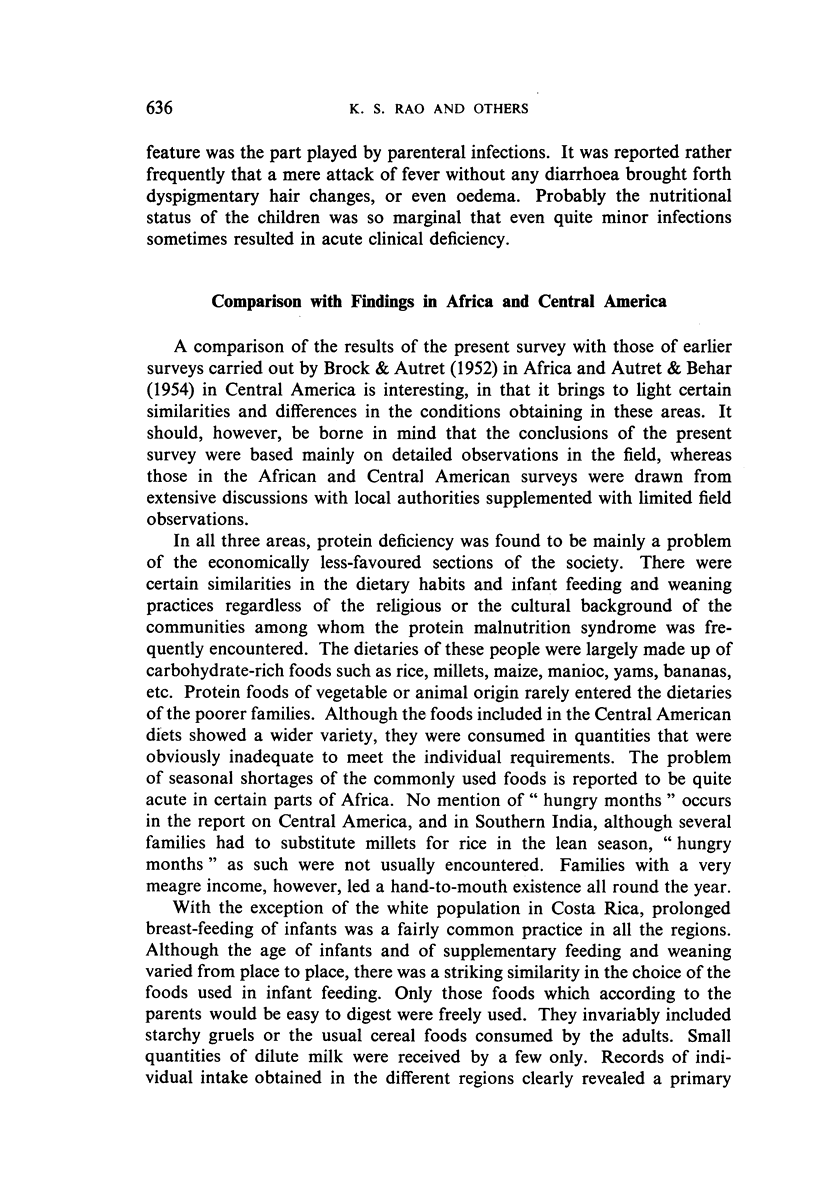
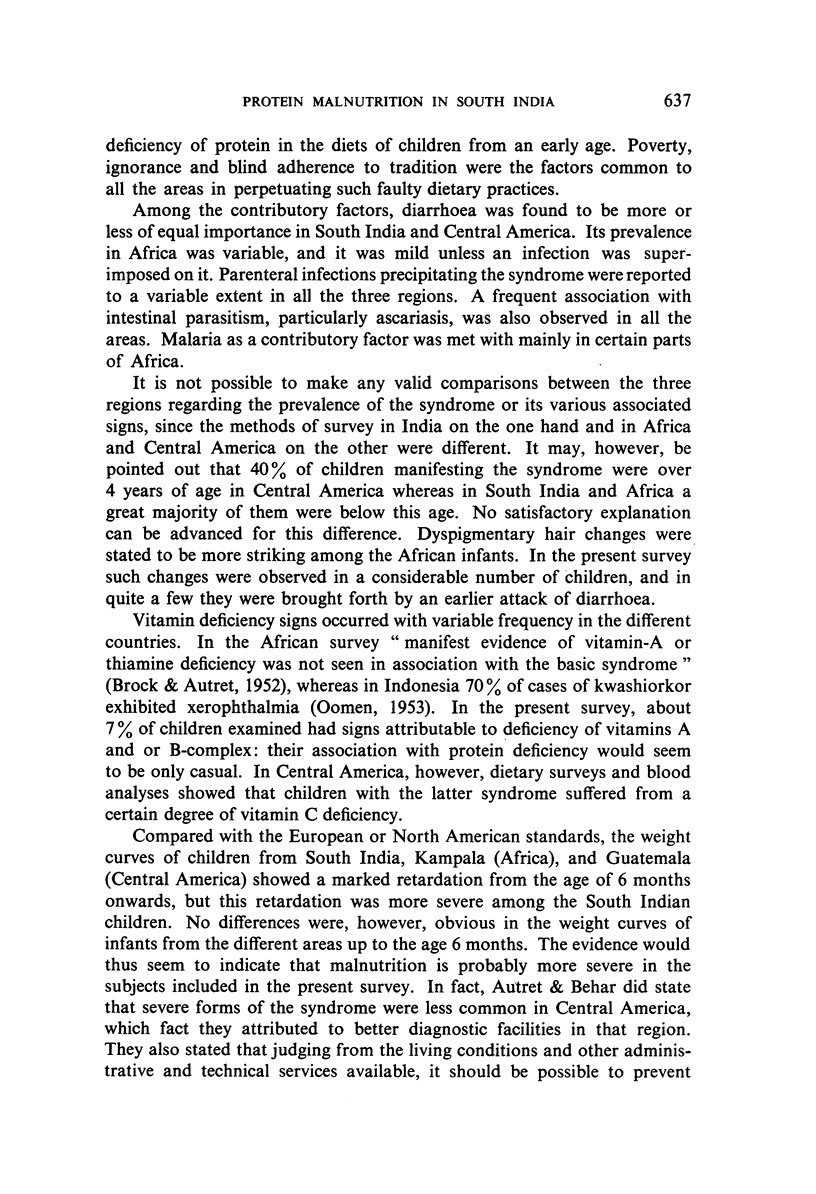
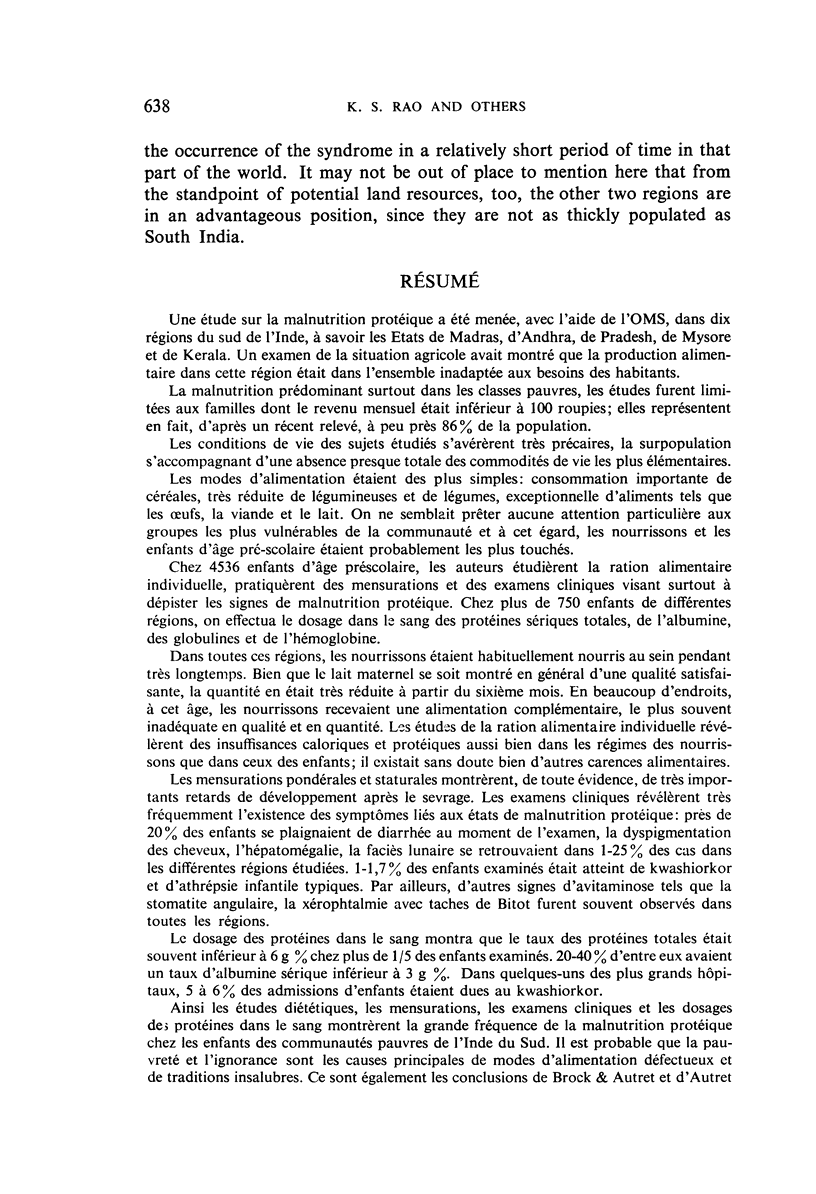
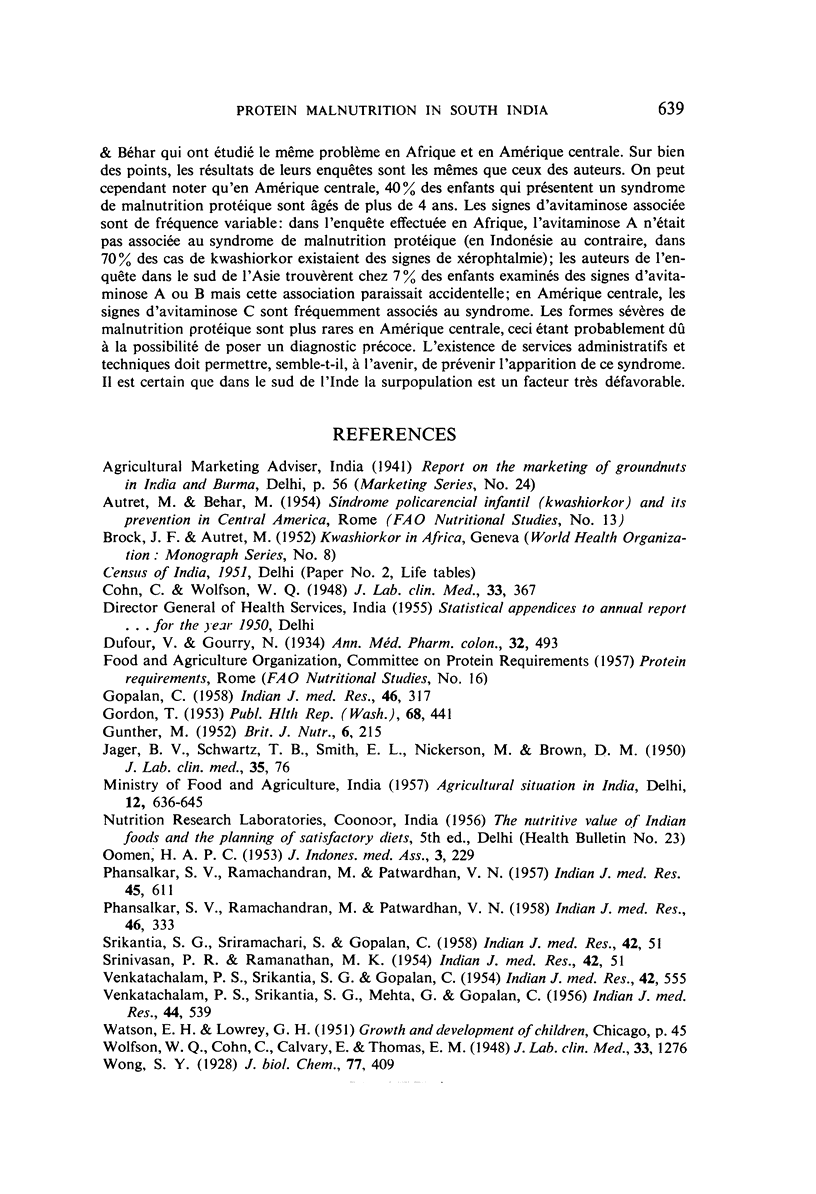
Images in this article
Selected References
These references are in PubMed. This may not be the complete list of references from this article.
- GOPALAN C. Effect of protein supplementation and some so-called galactogogues on lactation of poor Indian women. Indian J Med Res. 1958 Mar;46(2):317–324. [PubMed] [Google Scholar]
- GOPALAN C., MEHTA G., SRIKANTIA S. G., VENKATACHALAM P. S. Treatment of nutritional oedema syndrome (kwashiorkor) with vegetable protein diets. Indian J Med Res. 1956 Jul;44(3):539–545. [PubMed] [Google Scholar]
- GUNTHER M. Composition of human milk and factors affecting it. Br J Nutr. 1952;6(2):215–220. doi: 10.1079/bjn19520023. [DOI] [PubMed] [Google Scholar]
- JAGER B. V., SCHWARTZ T. B. Comparative electrophoretic and chemical estimations of of human serum albumin; an evaluation of six methods. J Lab Clin Med. 1950 Jan;35(1):76–86. [PubMed] [Google Scholar]
- PHANSALKAR S. V., RAMACHANDRAN M., PATWARDHAN V. N. Nutritive value of vegetable proteins. I. Protein efficiency ratios of cereals and pulses and the supplementary effect of the addition of a leafy vegetable. Indian J Med Res. 1957 Oct;45(4):611–621. [PubMed] [Google Scholar]
- PHANSALKAR S. V., RAMACHANDRAN M., PATWARDHAN V. N. Nutritive value of vegetable proteins. II. The effect of vegetable protein diets on the regeneration of haemoglobin and plasma proteins in protein-depleted rats. Indian J Med Res. 1958 Mar;46(2):333–344. [PubMed] [Google Scholar]
- SRINIVASAN P. R., RAMANATHAN M. K. Protein and sulphur amino acids in breast-mil of poor class Indian women in the Nilgiris. Indian J Med Res. 1954 Jan;42(1):51–54. [PubMed] [Google Scholar]
- VENKATACHALAM P. S., SRIKANTIA S. G., GOPALAN C. Clinical features of nutritional oedema syndrome in children. Indian J Med Res. 1954 Oct;42(4):555–568. [PubMed] [Google Scholar]



